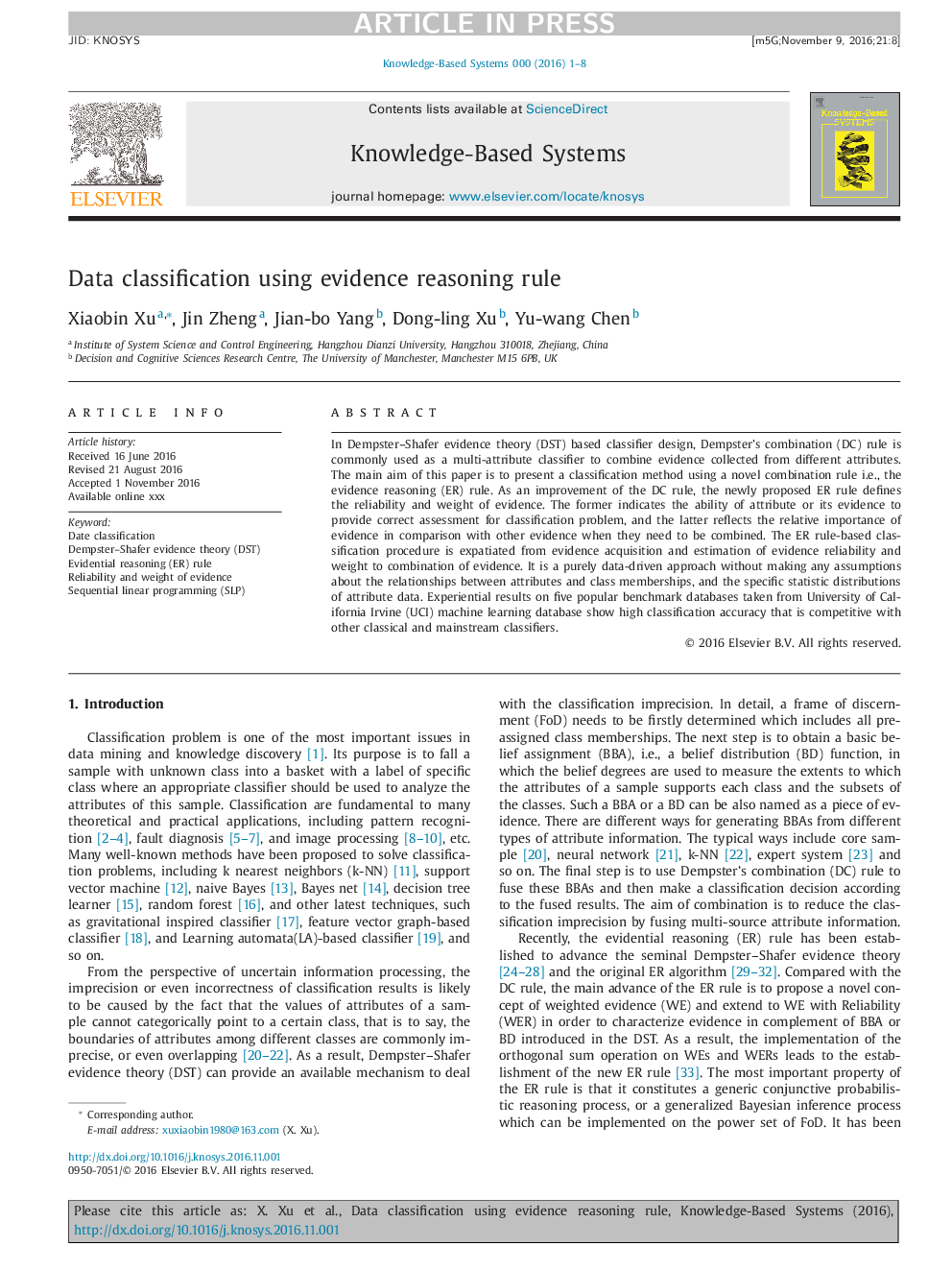| Article ID | Journal | Published Year | Pages | File Type |
|---|---|---|---|---|
| 4946345 | Knowledge-Based Systems | 2017 | 8 Pages |
Abstract
In Dempster-Shafer evidence theory (DST) based classifier design, Dempster's combination (DC) rule is commonly used as a multi-attribute classifier to combine evidence collected from different attributes. The main aim of this paper is to present a classification method using a novel combination rule i.e., the evidence reasoning (ER) rule. As an improvement of the DC rule, the newly proposed ER rule defines the reliability and weight of evidence. The former indicates the ability of attribute or its evidence to provide correct assessment for classification problem, and the latter reflects the relative importance of evidence in comparison with other evidence when they need to be combined. The ER rule-based classification procedure is expatiated from evidence acquisition and estimation of evidence reliability and weight to combination of evidence. It is a purely data-driven approach without making any assumptions about the relationships between attributes and class memberships, and the specific statistic distributions of attribute data. Experiential results on five popular benchmark databases taken from University of California Irvine (UCI) machine learning database show high classification accuracy that is competitive with other classical and mainstream classifiers.
Related Topics
Physical Sciences and Engineering
Computer Science
Artificial Intelligence
Authors
Xu Xiaobin, Zheng Jin, Yang Jian-bo, Xu Dong-ling, Chen Yu-wang,
